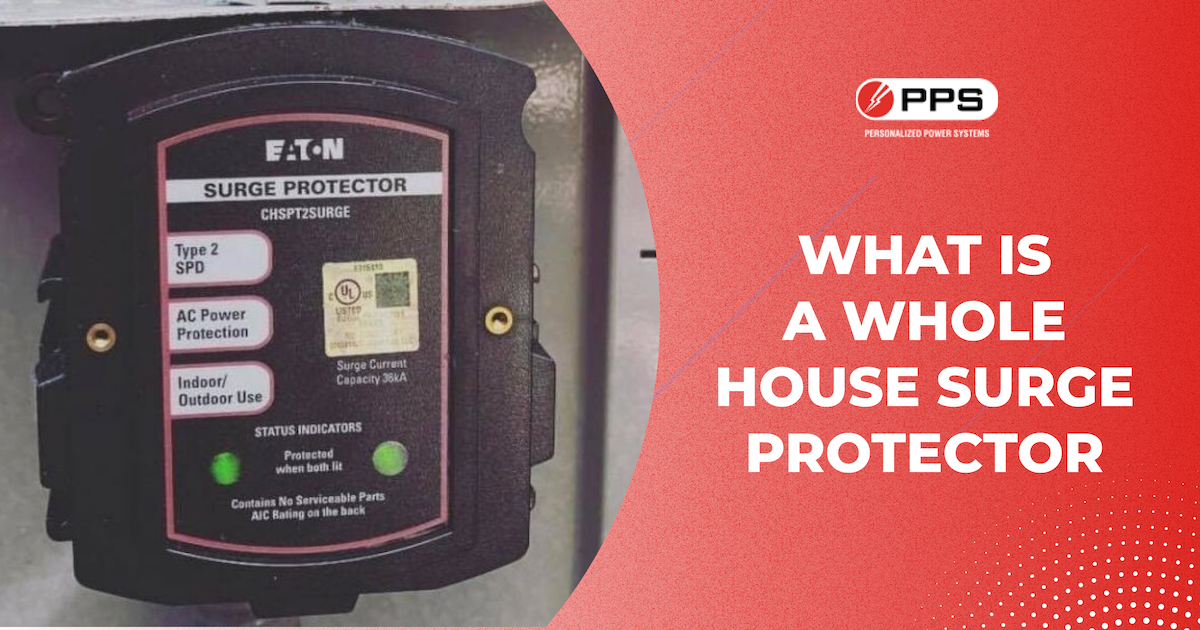In honor of National Preparedness Month, we want to discuss a very important form of protection for your home: whole house surge protectors. As the seasons begin to change, so does the weather which often brings heavy storms and winds. These storms, along with other events that cause power outages can cause great damage to the electrical system of your home. Read on to learn how to protect your home from the disastrous effects of a power surge.
Whole House Surge Protectors Defined
A surge protector is a safety measure that can be compared to a sieve you use to drain your pasta. When you pour the contents of the pot through the sieve, the good stuff (pasta) remains and the unnecessary water is poured out. Surge protectors work in a similar fashion. They are attached to the electrical panel of your home and allow safe electrical current to flow through while blocking out the dangerous ones. The dangerous electrical currents get diverted away from the home and into the ground through a special wire.
What Causes An Electrical Surge?
Electrical surges are a true concern for every homeowner, but how do they happen? These electrical events last less than a second but can cause irreparable harm to your home. Many electrical surges are caused by internal surges where larger devices divert electricity to and from appliances. Additionally, electrical surges can be caused by the following factors:
- Blackouts
- Broken power lines
- Lighting storms
- Faulty wiring
- Appliances cycling on and off
A power outage is also a great way to end up with a power surge. After the electricity has been off for some time, the return of power may happen too fast for your system to handle at once. This will result in a power surge unless you have a whole house surge protector installed.
In addition to power surges, one can never be too prepared for hurricane season. Check out our blog on a quick Hurricane 101.
Pros of Surge Protectors
After reading about the role of a surge protector and the causes of an electrical surge, you may already understand that it is very important in your home. There are many advantages of surge protectors, but mainly, they offer great protection to the following areas of your home:
- Large appliances and electronics
- Electrical system, including the wiring, sockets, and circuits
- Your finances from heavy repair costs caused by surges
Most importantly, whole house surge protectors offer you security, knowing that your electrical system will be safe after any power outage.
The electrical system suffers greatly in the event of a flood. Check out our tips for what to do when a flood happens in your area.
Cons of Surge Protectors
There are also a few cons of having surge protectors, but they are largely outweighed by the pros. Here are a few cons to consider:
The cost to install a surge protector is between $500-800, which is pretty high. However, this cost is easier to pay than the thousands of dollars of repairs that are required after a surge.
Not all surges can be stopped because each whole house surge protector has a maximum voltage that the surge protector can handle. There is still a possibility that small surges will come through, but they won’t cause the same amount of damage as if they didn’t have surge protectors. Plus, your electrician may be able to offer suggestions for how to add additional surge protectors by layering voltage ratings. Ask your electrician about this method!
Contact Personalized Power Systems Today!
Surge protectors are a great layer of protection for your home. To be prepared for the season’s storms and power outages, we urge you to have one installed in your home. Are you in need of a whole house surge protector? Contact Personalized Power Systems today to get started on your fall preparations today! Do not run the risk of a whole house surge that can cause much undue harm to your home. Contact Personalized Power Systems today for a consultation and to understand your options.


